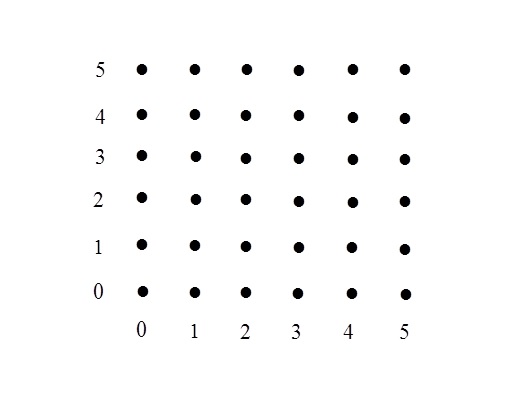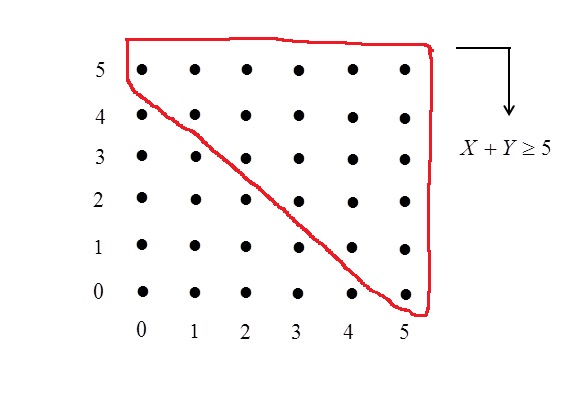We present more examples to further illustrate the thought process of conditional distributions. A conditional distribution is a probability distribution derived from a given probability distribution by focusing on a subset of the original sample space (we assume that the probability distribution being discussed is a model for some random experiment). The new sample space (the subset of the original one) may be some outcomes that are of interest to an experimenter in a random experiment or may reflect some new information we know about the random experiment in question. We illustrate this thought process in the previous post Conditional Distributions, Part 1 using discrete distributions. In this post, we present some continuous examples for conditional distributions. One concept illustrated by the examples in this post is the notion of mean residual life, which has an insurance interpretation (e.g. the average remaining time until death given that the life in question is alive at a certain age).
_____________________________________________________________________________________________________________________________
The Setting
The thought process of conditional distributions is discussed in the previous post Conditional Distributions, Part 1. We repeat the same discussion using continuous distributions.
Let be a continuous random variable that describes a certain random experiment. Let
be the sample space of this random experiment. Let
be its probability density function.
We assume that is a univariate random variable, meaning that the sample space
is the real line
or a subset of
. Since
is a continuous random variable, we know that
would contain an interval, say,
.
Suppose that in the random experiment in question, certain event has occurred. The probability of the event
is obtained by integrating the density function over the set
.
Since the event has occurred,
. Since we are dealing with a continuous distribution, the set
would contain an interval, say
(otherwise
). So the new probability distribution we define is also a continuous distribution. The following is the density function defined on the new sample space
.
The above probability distribution is called the conditional distribution of given the event
, denoted by
. This new probability distribution incorporates new information about the results of a random experiment.
Once this new probability distribution is established, we can compute various distributional quantities (e.g. cumulative distribution function, mean, variance and other higher moments).
_____________________________________________________________________________________________________________________________
Examples
Example 1
Let be the lifetime (in years) of a brand new computer purchased from a certain manufacturer. Suppose that the following is the density function of the random variable
.
Suppose that you have just purchased a one such computer that is 2-year old and in good working condition. We have the following questions.
- What is the expected lifetime of this 2-year old computer?
- What is the expected number of years of service that will be provided by this 2-year old computer?
Both calculations are conditional means since the computer in question already survived to age 2. However, there is a slight difference between the two calculations. The first one is the expected age of the 2-year old computer, i.e., the conditional mean . The second one is the expected remaining lifetime of the 2-year old computer, i.e.,
.
For a brand new computer, the sample space is the interval . Knowing that the computer is already 2-year old, the new sample space is
. The total probability of the new sample space is:
The conditional density function of given
is:
The first conditional mean is:
The second conditional mean is:
In contrast, the unconditional mean is:
So if the lifetime of a computer is modeled by the density function given here, the expected lifetime of a brand new computer is 4 years. If you know that a computer has already been in use for 2 years and is in good condition, the expected lifetime is 4.6 years, where 2 years of which have already passed, showing us that the remaining lifetime is 2.6 years.
Note that the following calculation is not , though is something that some students may attempt to do.
The above calculation does not use the conditional distribution that . Also note that the answer is less than the unconditional mean
.
Example 2 – Exponential Distribution
Work Example 1 again by assuming that the lifetime of the type of computers in questions follows the exponential distribution with mean 4 years.
The following is the density function of the lifetime .
The probability that the computer has survived to age 2 is:
The conditional density function given that is:
To compute the conditional mean , we have
Then .
We have an interesting result here. The expected lifetime of a brand new computer is 4 years. Yet the remaining lifetime for a 2-year old computer is still 4 years! This is the no-memory property of the exponential distribution – if the lifetime of a type of machines is distributed according to an exponential distribution, it does not matter how old the machine is, the remaining lifetime is always the same as the unconditional mean! This point indicates that the exponential distribution is not an appropriate for modeling the lifetime of machines or biological lives that wear out over time.
_____________________________________________________________________________________________________________________________
Mean Residual Life
If a 40-year old man who is a non-smoker wants to purchase a life insurance policy, the insurance company is interested in knowing the expected remaining lifetime of the prospective policyholder. This information will help determine the pricing of the life insurance policy. The expected remaining lifetime of the prospective policyholder is called is called the mean residual life and is the conditional mean where
is a model for the lifetime of some life.
In engineering and manufacturing applications, probability modeling of lifetimes of objects (e.g. devices, systems or machines) is known as reliability theory. The mean residual life also plays an important role in such applications.
Thus if the random variable is a lifetime model (lifetime of a life, system or device), then the conditional mean
is called the mean residual life and is the expected remaining lifetime of the life or system in question given that the life has survived to age
.
On the other hand, if the random variable is a model of insurance losses, then the conditional mean
is the expected claim payment per loss given that the loss has exceeded the deductible of
. In this interpretation, the conditional mean
is called the mean excess loss function.
_____________________________________________________________________________________________________________________________
Summary
In conclusion, we summarize the approach for calculating the two conditional means demonstrated in the above examples.
Suppose is a continuous random variable with the support being
(the positive real numbers), with
being the density function. The following is the density function of the conditional probability distribution given that
.
Then we have the two conditional means:
If is calculated first (or is easier to calculate), then
, as shown in the above examples.
If is a discrete random variable, then the integrals are replaced by summation symbols. As indicated above, the conditional mean
is called the mean residual life when
is a probability model of the lifetime of some system or life.
_____________________________________________________________________________________________________________________________
Practice Problems
Practice problems are found in the companion blog.
_____________________________________________________________________________________________________________________________




